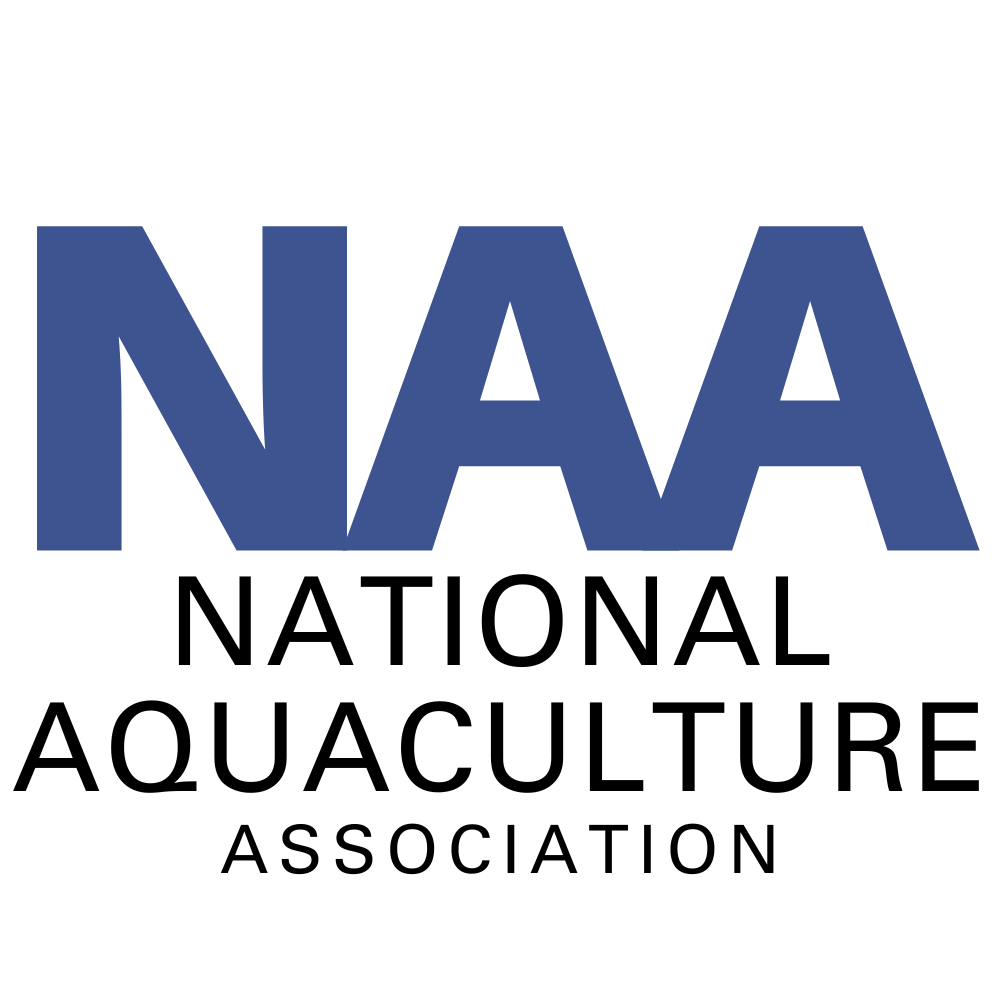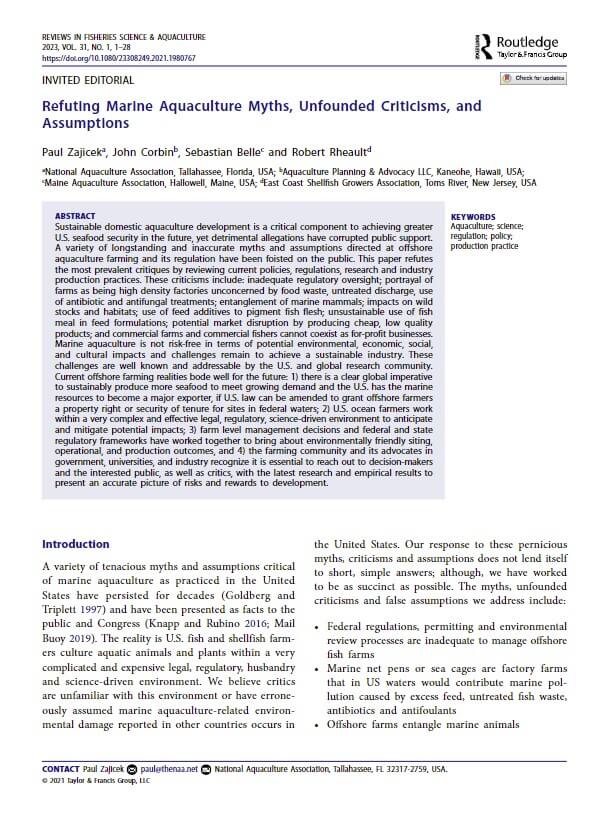We must plant the sea and herd its animals using the sea as farmers instead of hunters. That is what civilization is all about - farming replacing hunting.

Untapped Potential for Americans
Current Marine Production
U.S. marine aquaculture supplies about 3% of U.S. seafood consumption.
In 2020, marine aquaculture farms in the United States produced 90 million pounds of seafood valued at $430 million USD.
What is the EEZ?
The Exclusive Economic Zone is the U.S.'s territorial waters.
The EEZ encompasses 4.4 million square miles of ocean space.
A U.S. study estimated that 195 square miles of ocean, managed under existing regulations, could produce 1.3 billion pounds or more of high quality seafood.
Growth in Perspective
Farming of an area representing half the size of Delaware would double U.S. seafood production.
Farming an area the size of the Pentagon distributed across 4.4. million square miles of ocean space could produce 220 million pounds of fresh seafood and 50,000 farm and non-farm jobs.
Leading by Example
Import or lead the world in sustainable aquaculture development?
The U.S. is not a world leader in aquaculture production by volume or value, but we are a world leader in the thoughtful and rigorous development of regulatory and nonregulatory production practices, animal nutrition and health management, technological innovation, and the efficient processing and distribution of high-quality, wholesome seafood.
Addressing Misconceptions
A variety of tenacious myths critical of marine aquaculture practiced in the United States have persisted for decades and presented as facts to the public and Congress. Those unfamiliar or critical of marine aquaculture often erroneously assume marine aquaculture-related environmental damage reported in other countries occurs in the United States or based assumptions on decades old information. Dramatic innovations in systems engineering, production and monitoring technologies, spatial planning and aquatic animal science have occurred in recent decades that quickly resolve outdated criticisms.
The reality is U.S. marine aquaculture farmers culture aquatic animals and plants within a very complicated and expensive legal, regulatory, husbandry and science-driven environment.
Current federal regulatory authorities, unilaterally or in partnership with the states, provide enforceable standards to protect navigation and nav-igational aids, water and benthic quality, food safety, drug and chemical use, aquatic animal health, endangered species, wild fishery stocks (with respect to potential aquaculture impacts to those populations), marine mammals, migratory birds and essential fish habitat.
The existing and newly proposed aquaculture permitting procedures also provide an opportunity for coastal states to comment on proposed federal operational permits associated with offshore marine aquaculture.
Existing laws applicable to aquaculture operations include, but are not limited to:
- Agricultural Marketing Act
- Animal Health Protection Act
- Animal Medicinal Use Drug Clarification Act
- Coastal Zone Management Act
- Endangered Species Act
- Federal Food Drug and Cosmetic Act
- Federal Insecticide, Fungicide, and Rodenticide Act
- Fish and Wildlife Coordination Act
- Federal Water Pollution Control Act (Clean Water Act)
- Food Safety Modernization Act
- Lacey Act
- Magnuson-Stevens Fishery Conservation and Management Act
- Moving Ahead for Progress in the 21st Century Act
- Marine Mammal Protection Act
- Migratory Bird Protection Act
- Minor Use and Minor Species Animal Health Act
- National Environmental Policy Act
- National Historic Preservation Act
- National Marine Sanctuary Resources Act
- National Invasive Species Act
- Non-indigenous Aquatic Nuisance Prevention and Control Act
- Outer Continental Shelf Lands Act
- Rivers and Harbors Act
Through Executive Order, rulemaking, judicial rulings and an opportunity to comment on significant federal permitting by other federal agencies, the following agencies have an important regulatory role relative to offshore aquaculture:
- U.S. Environmental Protection Agency
- U.S. Department of Agriculture
- U.S. Army Corps of Engineers
- U.S. Coast Guard
- U. S. Department of Defense
- U.S. Department of Interior
- National Oceanic and Atmospheric Administration
- Federal Aviation Administration
- State agencies (agriculture, natural resources, and environ-mental protection)
It is also important to note that coastal states are provided an opportunity to comment on proposed federal permits and leases associated with offshore marine aquaculture through the Coastal Zone Management Act.


